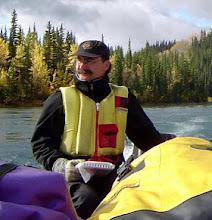



As my daughter is currently incommunicado in Antarctica, my mind is sensitive to southern polar notes that cross my path. Penguins (Sphenisciformes, Spheniscidae) in particular have exercised my imagination while thinking about her present location. As I am located at latitude 61 N occurrences of penguin are unusual. Therefore I decided to pull together a brief, and perhaps somewhat eclectic, natural history of the penguin in the far northern hemisphere.
In my reference to the magnum opus of Yukon ornithology, Birds of the Yukon Territory (2003, ed. Sinclair, Nixon, Eckert and Hughes) there are no specific references to penguins. The closest alphabetic relative, Sphyrapicus ruber, is noted. However, the prostrate form (having died after hitting a residential window in Judas Creek) illustrated bears little resemblance to the penguin. Perhaps Linnaeus pursued fowl in a non-alphabetic form. Regardless I decided to pursue my own research in the vicinity to confirm the absence of penguins. Photo 1 in my backyard indicates the complete non-presence of penguins. However research on the web and through this year's Christmas cards proved more fruitful.
Niles Olav (Photo 2), knighted by the King of Norway in 2008, has worked his way up through the ranks of the King's Guard of the Royal Norwegian Army, through a combination of diligence and several acts of reincarnation, since his recruitment as a lance corporal in 1972. So while rare in northern climes, penguins exhibit the kind of gritty determination to make something of themselves that characterizes most successful northerners.
Scotland, newly independent from England and fearful of a possible American military invasion, has followed the Iranian lead in the pursuit of a nuclear deterrent. Unlike the Iranians however, the Scots have successfully developed a "Tactical Nuclear Penguin" and are currently in the process of setting up this weapon system. Available for purchase on the web, the Tactical Nuclear Penguin leds the world in beery alcohol content. (Photo 3) The full details are available in an absurd video at http://www.brewdog.com/news.php?id=88
Finally, my niece Alexa in London, England provides incontrovertible proof that penguins have been introduced to the North Pole (Photo 4) Associated with this dramatic relocation experiment are some startling technological advances. Should the Scots get a hold of this information, even the Norwegian army will quake at the sight of Gaelic Atomic Penguins.




.JPG)
.jpg)


























 I was pleased to see the familiar blue walls of the tent and Andrew in his sleeping bag beside me in the morning. This bright spot was followed by the sadder realization that we were hiking through the pass in a gale. A good breakfast, oatmeal with landjager sausage, my Ibeprofan with lots of water and some good stretches got us on to the trail, the last of our group to leave Sheep Camp.
I was pleased to see the familiar blue walls of the tent and Andrew in his sleeping bag beside me in the morning. This bright spot was followed by the sadder realization that we were hiking through the pass in a gale. A good breakfast, oatmeal with landjager sausage, my Ibeprofan with lots of water and some good stretches got us on to the trail, the last of our group to leave Sheep Camp.

















